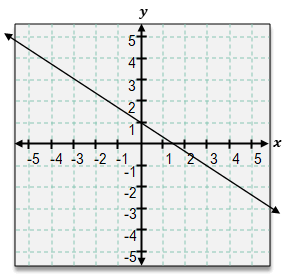Hey, everyone. So up to this point, we've been spending a lot of time focusing on functions. We've been looking at the graphs of functions and finding the domain and range. And in this video, we're going to be taking a look at some of the common functions. These are the functions that are going to frequently show up throughout this course.
It's definitely important to make sure we're familiar with these functions and their graphs and just in general how they work. Let's take a look at the constant function. The constant function occurs when our function \( f(x) = c \), where \( c \) can be any constant number. For example, our function \( f(x) = 2 \) would be a constant function because 2 is just a constant, and notice on our graph that \( y = 2 \) is constantly the value in all directions. We can input any \( x \) that we want into this function. So, we would say that the domain goes from negative infinity to positive infinity because we can have any \( x \) value we want. But notice how the range is only going to be where our \( y \) value is 2. \( y = 2 \) is the only possible output we can get for this function. Remember, this value is just going to be whatever \( c \) is, so it's not always going to be 2; it could be 4 or negative \( \frac{5}{3} \).
Now let's take a look at the identity function next. The identity function says that \( f(x) = x \), and this function tells you that whatever you put into the function, you're going to get out of it. For example, if you put negative one in for \( x \), you're going to get negative one as your output. Similarly, if you put 50 in for \( x \), you're going to get 50 as your output. Because of this, we can say that the domain is all real numbers because we can put any number we want into it. Additionally, the range is also all real numbers.
Now let's take a look at the square function. The square function forms this interesting shape called a parabola. The parabola is this bowl-like shape that you see on the screen here. The square function happens when \( f(x) = x^2 \), and the domain for this function is going to be all real numbers. Note that even though all the positive \( y \)'s are included, none of these negative \( y \)'s are encompassed; the curve does not extend down below the graph. So, we would say that the range will go from 0 all the way to positive infinity, and we do include the 0 because we could have a value right at the origin, but we can never be below 0, so we can never get a negative output for the square function.
Next, let's take a look at the cube function. The cube function is defined by \( f(x) = x^3 \). For this graph, we have all the negative \( x \)'s and all the positive \( x \)'s included. So we would say that the domain is all real numbers. Similarly, for the \( y \) values, we include all the negative and positive \( y \)'s in this curve. So, the range is also all real numbers.
Now let's take a look at the square root function. And the square root function has the most restrictions of all the common functions. In this function, we look at our graph; notice how this graph continuously goes to the right and also goes up. Because it continuously goes to the right, we have all positive \( x \)'s, but none of the negative \( x \)'s are included. So, we would say that the domain goes from 0, including 0, all the way up to positive infinity. Looking at our range, notice that our range continuously goes up, so we have all the positive \( y \) values, but none of the negative \( y \) values are included. So the range also goes from 0 to positive infinity.
Next, let's take a look at the cube root function. The cube root function is where we have our function \( f(x) = \sqrt[3]{x} \). Notice for this function, we have all of our negative \( x \)'s and all of our positive \( x \)'s included. Thus, the domain goes from negative infinity to positive infinity, as all real numbers are going to be included for the domain because we see that our curve extends to all these values. Similarly, considering our \( y \) values, we can see that all the positive \( y \)'s and all the negative \( y \)'s will also be included because this graph continues to extend downwards and upwards as well as to the left and right. So, the range is going to be all real numbers also. This function does include negative \( x \) values because the negative \( x \)'s are represented in this graph.
So those are some of the common functions that you'll see throughout this course and also in future math courses. Hopefully, you found this INTRODUCTION helpful, and let me know if you have any questions.



